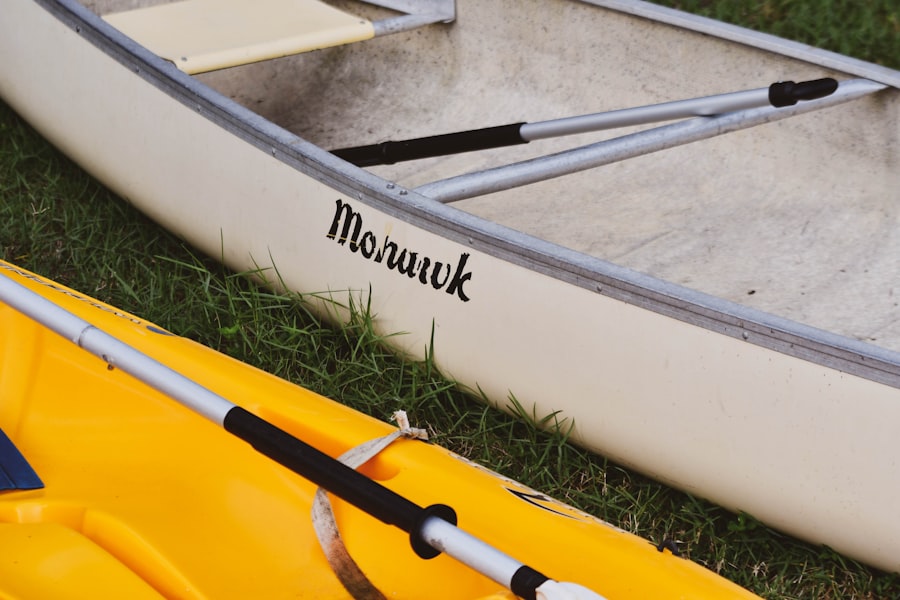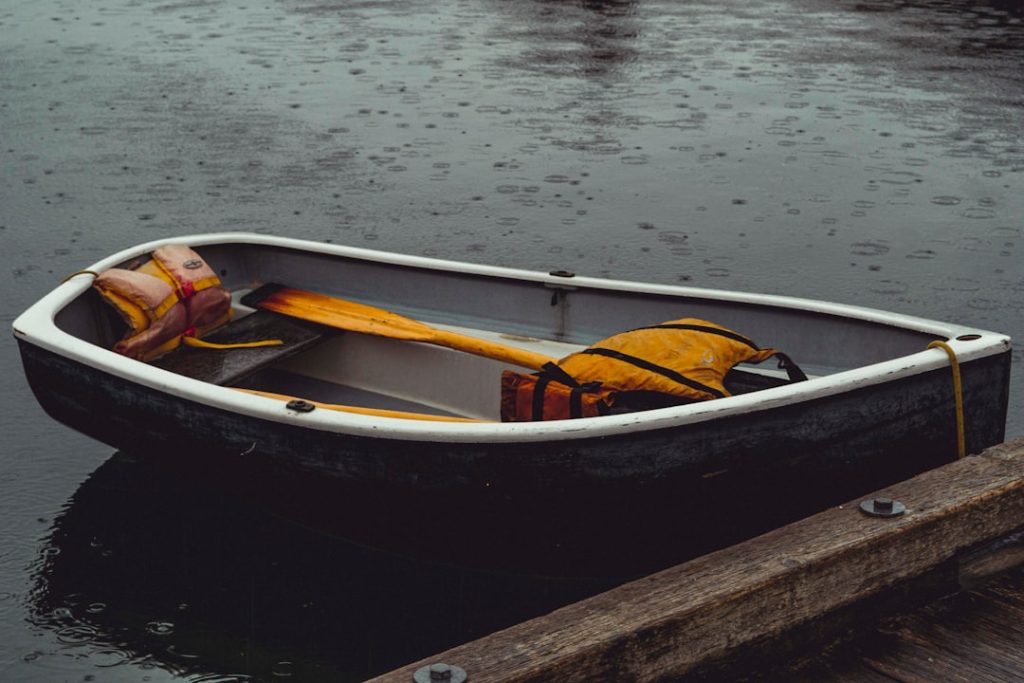Purchasing a used kayak can be an excellent decision for both novice paddlers and seasoned adventurers alike. One of the most significant advantages is the cost savings associated with buying pre-owned equipment. New kayaks can range from a few hundred to several thousand dollars, depending on the type and brand.
In contrast, a used kayak often comes at a fraction of the original price, allowing buyers to allocate their budget toward other essential gear, such as paddles, life jackets, or even a quality dry bag. This financial flexibility can make kayaking more accessible to a broader audience, encouraging more people to explore the waterways. Another benefit of buying a used kayak is the opportunity to find unique models that may no longer be in production.
Many kayakers develop a fondness for specific brands or designs that have been discontinued, and the used market can be a treasure trove of rare finds. For instance, certain models from reputable manufacturers may have been praised for their stability or speed but are no longer available in stores. By purchasing used, you might discover a gem that perfectly suits your paddling style and preferences, enhancing your overall kayaking experience.
Key Takeaways
- Buying a used kayak offers cost savings and access to quality gear.
- Inspecting the kayak carefully ensures safety and suitability for your needs.
- Online marketplaces and local shops are great places to find used kayaks.
- Proper maintenance extends the life and performance of your kayak.
- Planning your first trip enhances your kayaking experience and adventure.
How to Choose the Right Used Kayak for Your Needs
Selecting the right used kayak involves understanding your specific needs and preferences as a paddler. First and foremost, consider the type of kayaking you plan to do. Are you interested in leisurely flatwater paddling on lakes and rivers, or do you envision tackling rougher waters and ocean waves?
Different kayaks are designed for different environments; for example, recreational kayaks are typically wider and more stable, making them ideal for calm waters, while touring kayaks are longer and narrower, designed for speed and efficiency over longer distances. Additionally, think about your physical attributes and comfort level. The kayak’s size and weight should be manageable for you, especially if you plan to transport it frequently.
A heavier kayak may be challenging to carry alone, while a smaller model might not provide enough stability for larger paddlers. Pay attention to the cockpit size as well; it should allow for easy entry and exit while providing a snug fit to enhance control. If possible, test out various models before making a decision to ensure that you find one that feels comfortable and suits your paddling style.
Where to Find Quality Used Kayaks for Sale

Finding quality used kayaks requires some research and exploration of various avenues. Local sporting goods stores often have bulletin boards where individuals can post listings for used kayaks. Additionally, many outdoor recreation shops may offer trade-in programs or consignment sales, allowing customers to purchase pre-owned kayaks that have been inspected for quality.
Visiting these stores can also provide an opportunity to speak with knowledgeable staff who can offer advice on what to look for in a used kayak. Online marketplaces have become increasingly popular for buying used kayaks. Websites like Craigslist, Facebook Marketplace, and specialized outdoor gear sites often feature listings from individuals looking to sell their kayaks.
While these platforms can provide a wide selection, it’s essential to exercise caution when purchasing online. Always verify the seller’s credibility and look for reviews or ratings if available. Additionally, consider joining local kayaking groups on social media; members often share information about available kayaks or may even be selling their own.
What to Look for When Inspecting a Used Kayak
| Inspection Area | What to Look For | Why It Matters | Severity Level |
|---|---|---|---|
| Hull Condition | Cracks, holes, deep scratches, or dents | Compromises water tightness and structural integrity | High |
| Seams and Joints | Separation, gaps, or signs of repair | Potential leaks and weakened structure | High |
| Deck and Cockpit | Cracks, warping, or damaged fittings | Affects comfort and safety during use | Medium |
| Rudder and Skeg | Functionality, damage, or missing parts | Impacts steering and control | Medium |
| Seats and Footrests | Wear, broken parts, or missing adjustments | Comfort and proper paddling posture | Low |
| Handles and Straps | Fraying, looseness, or missing components | Ease of transport and safety | Low |
| Storage Compartments | Seals, latches, and waterproofing condition | Protects gear from water damage | Medium |
| Overall Cleanliness | Mold, mildew, or unpleasant odors | Indicates care and maintenance history | Low |
| Manufacturer and Model | Reputation, age, and availability of parts | Long-term usability and support | Medium |
When inspecting a used kayak, several key factors should be evaluated to ensure you’re making a sound purchase. Start by examining the hull for any signs of damage, such as cracks, deep scratches, or dents. These imperfections can affect the kayak’s performance and durability on the water.
Pay particular attention to areas where the kayak may have been dragged over rocks or other abrasive surfaces, as these spots are more prone to wear and tear. Next, check the fittings and hardware on the kayak. Look at the hatches, bulkheads, and any adjustable components like footrests or seat straps.
Ensure that all parts are functioning correctly and that there are no signs of corrosion or rust on metal components. If the kayak has a rudder or skeg system, test its operation to confirm it moves smoothly without obstruction. A thorough inspection will help you identify any potential issues that could lead to costly repairs down the line.
Tips for Buying a Used Kayak Online
Buying a used kayak online can be convenient but requires careful consideration to avoid pitfalls. First, always request detailed photographs from the seller that showcase various angles of the kayak, including close-ups of any damage or wear. This visual information is crucial in assessing the kayak’s condition before making a trip to see it in person.
If possible, ask for videos demonstrating the kayak in use; this can provide insight into its performance on the water. Communication with the seller is also vital when purchasing online. Don’t hesitate to ask questions about the kayak’s history, such as how often it was used, where it was primarily paddled, and whether any repairs have been made.
A reputable seller should be transparent about these details and willing to provide additional information if needed. If you feel uncertain about the transaction or if something seems off about the seller’s responses, trust your instincts and consider looking elsewhere.
The Importance of Proper Maintenance for Used Kayaks

Proper maintenance is essential for prolonging the life of any kayak, especially one that has been previously owned. Regular cleaning after each use is crucial; saltwater, dirt, and debris can accumulate on the hull and fittings, leading to deterioration over time. Rinse your kayak with fresh water after every outing, particularly if you’ve been in saltwater environments.
This simple step helps prevent corrosion and keeps the materials in good condition. In addition to cleaning, periodic inspections should be conducted to identify any potential issues before they escalate into significant problems. Check for signs of wear on seals and hatches; replacing these components promptly can prevent leaks during use.
If your kayak has a fiberglass or plastic hull, inspect it regularly for cracks or blisters that may require repair. By staying proactive with maintenance tasks, you can ensure that your used kayak remains safe and enjoyable for years to come.
How to Get the Best Deal on a Used Kayak
Securing the best deal on a used kayak often involves strategic negotiation skills and timing your purchase wisely. Start by researching the market value of similar models in your area; this knowledge will empower you during negotiations with sellers. If you find a kayak listed at a price higher than average, don’t hesitate to make a reasonable offer based on your research.
Many sellers expect some level of negotiation and may be willing to lower their asking price. Timing can also play a significant role in finding great deals on used kayaks. The demand for kayaks typically peaks during spring and summer months when outdoor activities are at their height.
Conversely, prices may drop during fall and winter when fewer people are actively kayaking. Shopping during off-peak seasons can lead to better deals as sellers look to offload their inventory before colder weather sets in.
The Adventure Awaits: Planning Your First Kayaking Trip
Once you’ve secured your used kayak, it’s time to plan your first adventure on the water! Begin by selecting an appropriate location based on your skill level and comfort with kayaking. For beginners, calm lakes or slow-moving rivers are ideal settings where you can practice paddling techniques without facing challenging conditions.
Research local waterways to find suitable launch sites and familiarize yourself with any regulations or permits required for kayaking in those areas. Before heading out, ensure you have all necessary gear packed and ready for your trip. Essential items include a personal flotation device (PFD), appropriate clothing based on weather conditions, sunscreen, water bottles for hydration, and snacks for energy during your outing.
It’s also wise to bring along safety equipment such as a whistle or signaling device in case of emergencies. As you embark on your first kayaking journey, embrace the experience fully—take in the beauty of nature around you while enjoying the thrill of gliding across the water in your newly acquired kayak.


